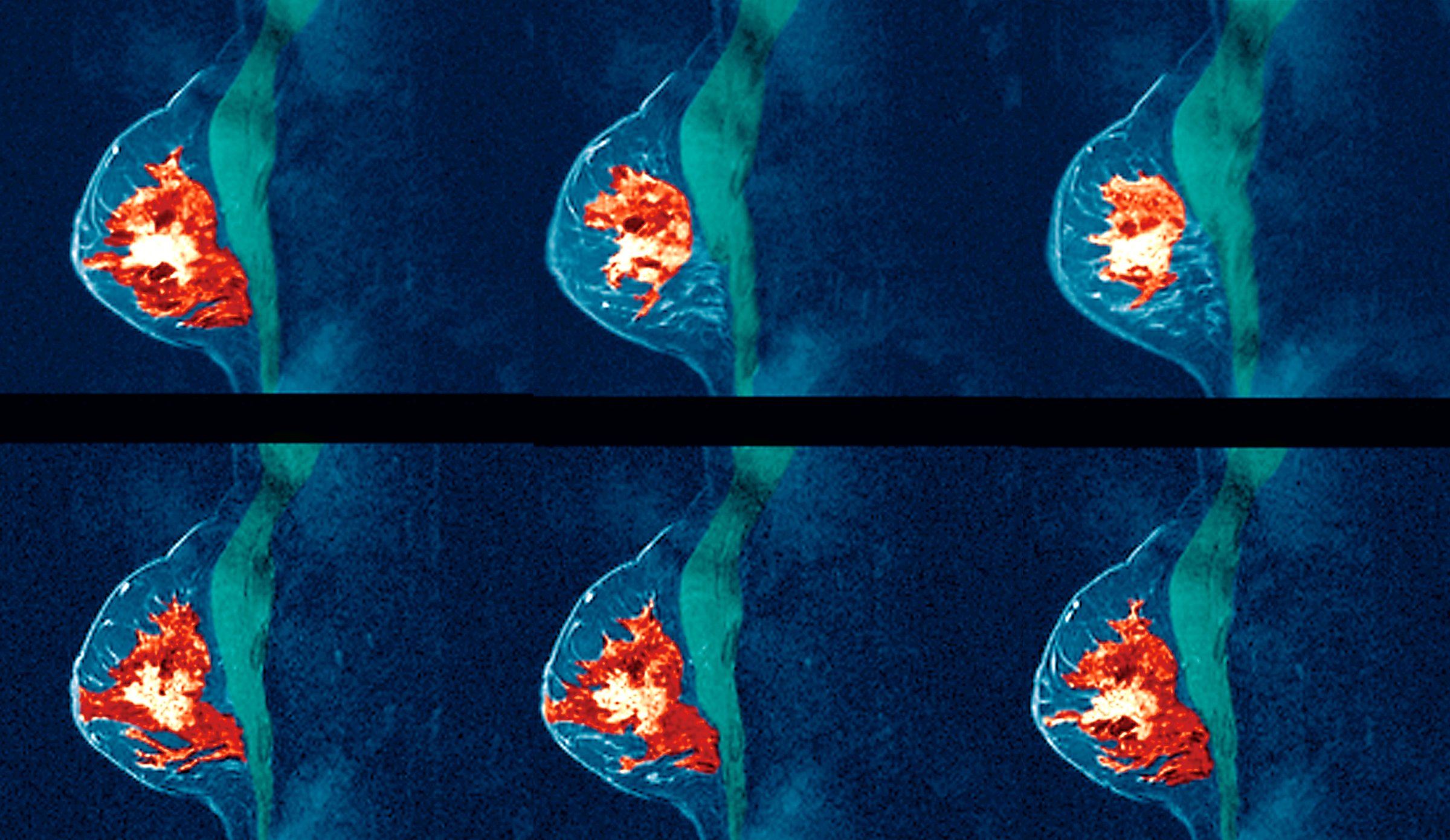
While there has been some controversy over when women should start getting mammograms, all experts agree that screening is an important first step in detecting breast cancers and treating them early. But for some women, that’s not enough. For the approximately 40% of women with dense breast tissue, and especially the 10% with extremely dense tissue, cancer cells are harder to detect, since the denser tissue can mask small growths. In addition, dense breast tissue itself is also a risk factor for developing cancer.
There’s been debate among experts over whether these women should have additional screening, on top of mammograms. A new study published in the New England Journal of Medicine provides the strongest data yet to support adding MRI screening to mammograms for women with extremely dense breast tissue.
Previous studies have compared rates of breast cancer in women getting mammograms alone to rates in those getting mammograms and MRI, but it hasn’t been clear that the “cancers” identified in these data sets were actually cancer. That’s because some breast cancers are what experts consider a pre-cancerous stage, known as ductal carcinoma in situ, meaning they may not grow or progress into disease. That’s led some doctors to worry over potential over-diagnosis of breast cancer, which can lead to over-treatment of lesions that may never develop into tumors. The U.S. Preventive Services Task Force, which attempts to find answers to controversial health questions, has concluded that there is not enough evidence to advise women about the benefits or harms of adding other breast-cancer testing on top of mammograms.
In the new study, Carla van Gils, professor of clinical epidemiology of cancer at the University Medical Center Utrecht, attempted to address this concern by focusing on how many actual cancers the combination of mammogram and MRI can help to detect in women with dense breast tissue. Taking advantage of the fact that the Netherlands has a national cancer registry that includes about 99% of all diagnoses in the country, she and her team studied more than 40,000 women with extremely dense breast tissue, who were randomly assigned to screening with mammography alone or both mammography and MRI.
Each woman in the study was screened once in the two year study period (following the Netherlands’ screening guidelines that call for mammograms every other year for women over 50). Van Gils and her team analyzed how many invasive cancers were detected in between screenings, which serves as a measure for how effective the MRI was in detecting what the researchers call interval cancers—those diagnosed after a negative mammogram, and before the next mammogram was scheduled. “If we can prevent those, we know at least we are preventing clinically relevant tumors,” says van Gils, “and not just over diagnosing.” They found that the rate of such cancers in women getting both types of imaging was 2.5 per 1,000 screenings, compared to 5 in 1,000 for women just getting mammograms.
The idea is that supplementing mammograms with MRI in the initial screening led to earlier detection of tumors that the mammograms missed which in turn contributed to lower cancer rates during a second screening, because presumably the women are seeing their doctors when suspicious growths are found and getting them treated.
The data do not confirm that combining mammograms and MRIs can lead to fewer deaths from breast cancer; that’s something van Gils will study in coming years. But documenting the reduction in cancer detected in between screenings is an important first step in showing the value of supplemental MRI for women with extremely dense breast tissue. It also supports the reasoning behind a law passed earlier this year in the U.S. requiring that mammogram reports include an assessment of the density of women’s breast tissue, along with an explanation for why that might make mammogram results more difficult to interpret.
Van Gils notes that the results of her study aren’t robust enough yet to recommend that all women with dense breast tissue (even those with extremely dense breast tissue) should get MRIs on top of their regular mammogram screenings. For one, lowering the rates of false positives for MRIs is still a challenge; training radiologists to become more adept are reading images of dense breast tissue could help, as could applying machine learning technology to pick up subtle changes that even the best-trained human eyes cannot. That said, if longer-term studies—enabling doctors to compare MRI readings over time to track the growth of lesions—also confirm that supplementing mammograms with MRI can lower death rates from breast cancer, it could push experts to change guidelines and give women firmer advice on how best to manage their cancer risk.
More Must-Reads from TIME
- Cybersecurity Experts Are Sounding the Alarm on DOGE
- Meet the 2025 Women of the Year
- The Harsh Truth About Disability Inclusion
- Why Do More Young Adults Have Cancer?
- Colman Domingo Leads With Radical Love
- How to Get Better at Doing Things Alone
- Michelle Zauner Stares Down the Darkness
Contact us at letters@time.com